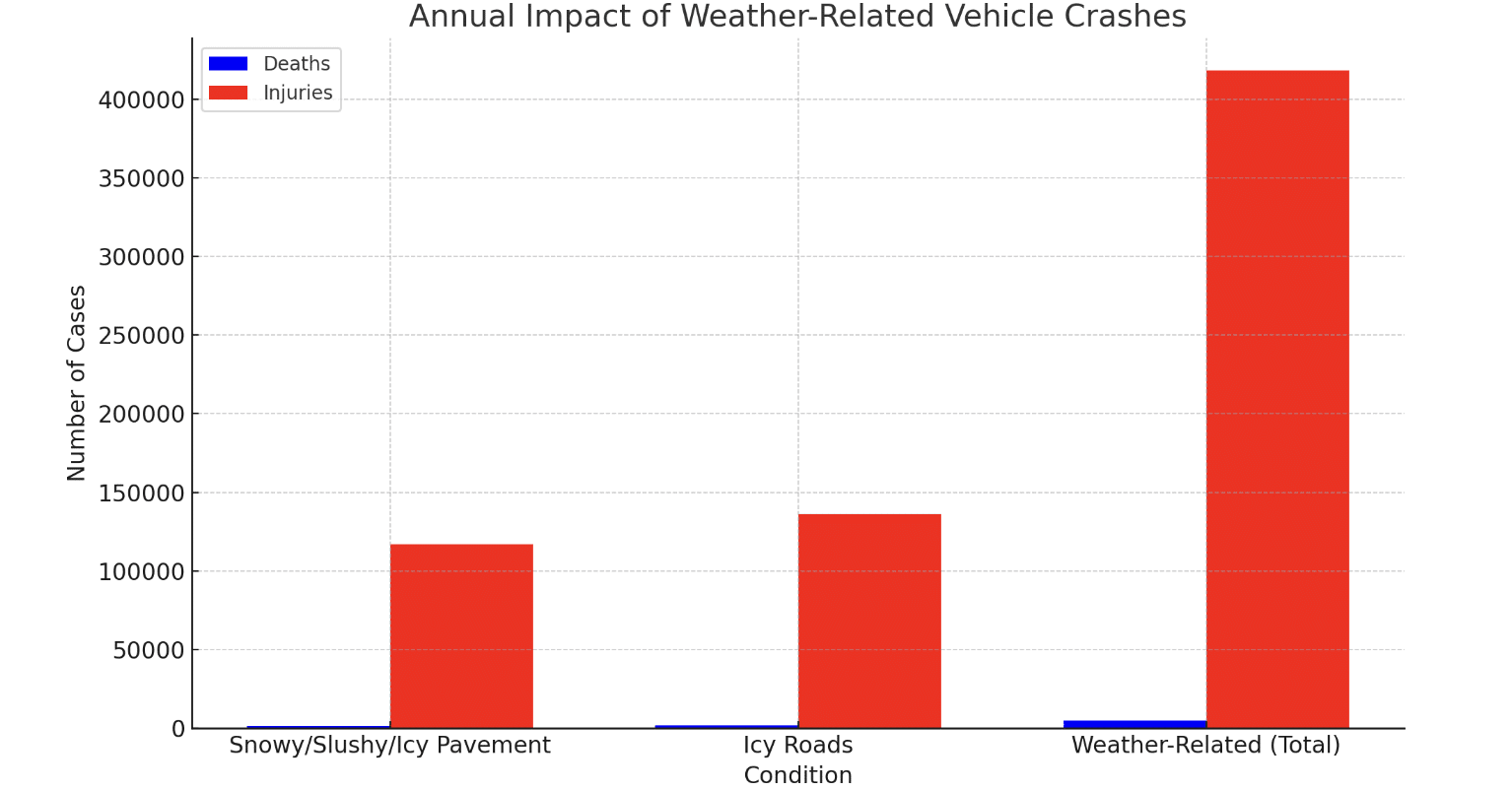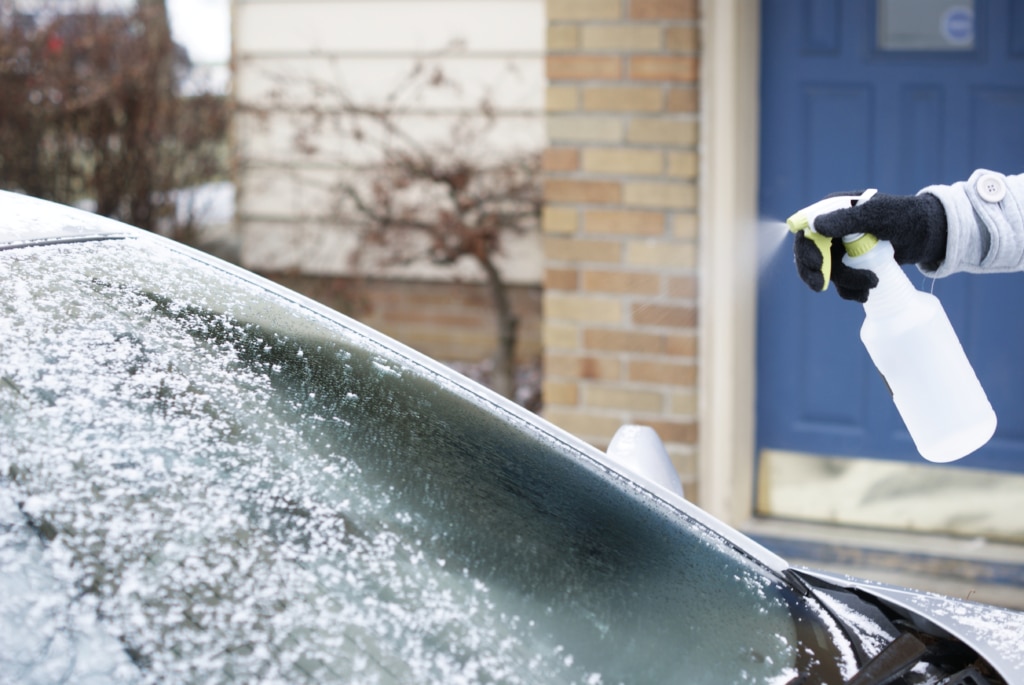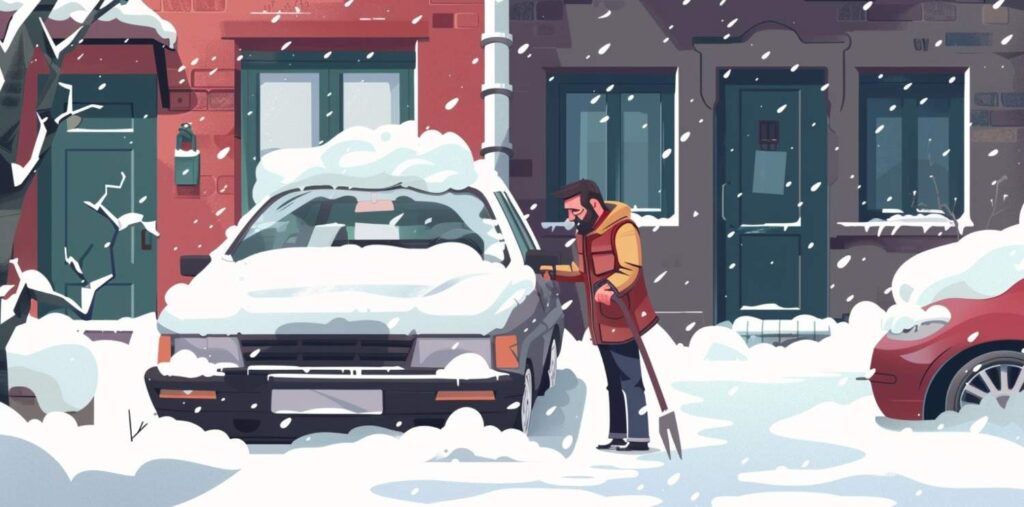Starting your car on a frosty morning only to find your windshield covered in ice is more than just frustrating—it can be dangerous.
Instead of scraping stubborn ice off with numb fingers, imagine if there were effective, simple ways to prevent that ice from forming in the first place.
In this article, we’ll share the top tricks for keeping your windshield ice-free so you can say goodbye to the tiresome scraping routine.
We’ll combine easy-to-make solutions with practical tips. Get ready to save time and hassle on those chilly mornings.
Shocking Statistical Data: Injuries and Death Due to Windshield Malfunction

Top Tricks for Keeping Your Windshield Ice-Free
Preventing ice from forming on your windshield is a smart approach to winter car care.
By being proactive, you can save time, ensure your safety, and avoid the inconvenience of scraping ice off your windshield on freezing mornings.
However, choosing the right method to prevent damage to your windshield or car paint is crucial.
| Solution | Composition | Pros | Cons |
|---|---|---|---|
| Commercial Spray | Chemical blend |
– Highly effective – Long-lasting |
– Expensive Potentially harmful to the environment and car exterior |
| Vinegar Spray | Vinegar mixed with water |
– Cost-effective – Easy to make |
– Less effective in very cold temperatures – Can corrode metal parts |
| Alcohol Solution | Rubbing alcohol mixed with water |
– Highly effective – Quick action – Low freezing point |
– Flammable – Strong odor |
| Saltwater Solution | Salt dissolved in water |
– Inexpensive – Accessible |
– Less effective than alcohol – Corrosive to paint and metal |
| Onion Treatment | Half an onion |
– Inexpensive, Environmentally friendly |
– Inconsistent effectiveness – Requires frequent application |
1. Anti-Icing Sprays
Maximize the effectiveness of anti-icing sprays by first ensuring your windshield is clean and dry. This helps the spray adhere properly and provide maximum coverage.
Commercial Anti-Icing Products
- Several popular anti-icing sprays are available, such as Prestone and CRC.
- These products are specially formulated for different climates and are easy to use.
- Spray on your windshield the night before a frost is expected.
Homemade Solutions
- If you prefer a more affordable option, you can create your anti-icing spray using vinegar and water.
- Mix three parts white vinegar with one part water in a spray bottle.
- This solution is easy to prepare and can be as effective as commercial products.
2. Physical Barriers
Windshield covers provide an excellent physical barrier against ice formation.
They are easy to put on and take off, saving time and effort in the morning.
You can secure the cover on your windshield the night before and remove it when you’re ready to drive.
Household Items as Covers
- If you don’t have a windshield cover, use common household items instead.
- Large towels, car mats, or even carpet pieces can be effective alternatives.
- Place the item over your windshield, ensuring it covers the entire surface.
- Use your windshield wipers or close the item in your car doors to keep it securely in place.
3. Chemical Solutions
Mix two parts rubbing alcohol with one part water in a spray bottle.
Spray the solution on your windshield the night before or in the morning.
The alcohol has a lower freezing point than water, which helps melt the ice faster.
Cautions
- Avoid using salt to melt ice on your windshield; it can corrode metal and damage your car’s paint.
- Also, never use boiling water to remove ice, as the sudden temperature change can cause the glass to crack.
By implementing these measures, you can save yourself the time and hassle of scraping ice off your windshield on frigid mornings.
A little preparation the night before can go a long way in ensuring your safety and convenience during the winter months.
Night Before Preparation for Preventing Ice Build Up

1. Covering Techniques
Covering your windshield is an effective way to prevent ice from forming overnight.
Creating a barrier between the glass and the cold air saves time and effort in the morning. Choose a cover that fits your windshield well and is made from a material that insulates against the cold.
Special windshield covers are designed for this purpose, but you can also use insulated blankets or tarps.
Ensure the cover is large enough to cover the entire windshield and part of the hood.
Place the cover over the windshield, ensuring it covers the entire glass surface. Tuck the edges of the cover inside the doors to keep it secure against wind.
If your cover has built-in magnets or straps, use them to attach the cover to the car body for added stability.
If you don’t have a special windshield cover, you can use household items like large towels, old sheets, or shower curtains.
Choose materials thick enough to provide insulation and won’t damage your car’s paint.
Use your car’s wiper blades or small magnets to keep the makeshift cover in place. Lift the wipers and place the cover under them, then lower them to hold the cover.
If using magnets, place them around the edges of the cover and attach them to the car body.
2. Application of Chemical Agents
Applying chemical agents to your windshield the night before can prevent ice from forming.
These substances lower water’s freezing point, making it harder for ice to develop on the treated surface.
Commercial anti-icing sprays are designed for this purpose and generally safe for your car.
However, you can also make homemade solutions using vinegar-water or alcohol-water mixtures.
Mix three parts white vinegar or rubbing alcohol with one part water in a spray bottle.
How to Apply
1. Cleaning the Windshield
- Start with a clean and dry windshield for maximum effectiveness.
- Remove any dirt, debris, or water droplets before applying the solution.
2. Spraying Technique
- Spray the solution evenly across the windshield, ensuring full coverage.
- Pay attention to the edges and corners, as these areas are prone to ice buildup.
3. Frequency and Amount
- Apply the solution once in the evening, using enough to coat the windshield fully.
- If extremely cold temperatures are expected, you may need to reapply the solution later at night.
4. Safety and Precautions
- Homemade solutions can be effective but may have some downsides.
- If spilled, vinegar can damage car paint, and alcohol can cause streaks or smears on the windshield if not used correctly.
- Always wipe off any excess solution and avoid getting it on the car’s paint.
Taking these preventive measures the night before can minimize ice buildup on your windshield and make your morning routine easier.
How to Remove Ice from your Windshield in the Morning
1. Quick De-Icing Methods
- Use a de-icer spray designed specifically for melting ice on windshields.
- Spray it liberally and let it work for a few minutes before using an ice scraper.
- Cover your windshield the night before with a tarp, old blanket, or commercial windshield cover.
- Turn on your defroster to its highest setting as you start your car.
- Directing hot air onto the windshield helps melt ice faster.
2. Natural Methods
- If possible, park your car facing east so the rising sun hits the windshield in the morning, aiding melting.
- Place a few slices of onion or potatoes on the corners of your windshield at night – their natural sugars can help prevent ice buildup.
Additional Tips for Maintaining your Windshield
1. Routine Checks
It’s important to regularly check and maintain your windshield throughout the year, not just during the winter months. Here are some tips:
- Check your windshield for new chips, cracks, or pitting after driving on rough roads or after impacts from road debris.
- Inspect the windshield wiper blades routinely and replace them if they are leaving streaks or not clearing the glass properly.
- Ensure the wiper fluid reservoir is topped up with an appropriate cold-weather formula.
- Check that the defroster vents are not blocked and blowing hot air properly.
Maintaining your windshield year-round can prevent small issues from becoming big,, expensive problems.
2. Seek Professional Help
Even with diligent self-inspections, having your windshield professionally inspected at least once a year is a good idea.
Trained windshield technicians can identify the following:
- Internal imperfections or flaws in the glass that could worsen over time.
- Any weaknesses or improper previous windshield repairs that need to be addressed.
- Whether pitting or chipping has reached the inner laminated layer of the windshield, which can dangerously impair structural integrity.
The professionals have the right tools and expertise to thoroughly evaluate the entire windshield and make repair or replacement recommendations to keep you safe on the road.
An annual windshield checkup, just like for your tires or brakes, can give you peace of mind and avoid larger preventable expenses later on.
Conclusion
Keeping your windshield ice-free during the winter months is crucial for your safety and convenience.
By implementing the preventative measures we’ve discussed, such as using anti-icing sprays, physical barriers, and homemade de-icing solutions, you can save yourself the time and hassle of scraping ice off your windshield on those frigid mornings.
Remember to choose the right method for your needs and avoid damaging substances like salt or boiling water.
With a little preparation the night before, you can ensure a clear view from your windshield and a safer driving experience.
So, take action now and try these top tricks to keep your windshield ice-free.
Your mornings will be much more pleasant, and you’ll be ready to confidently tackle the day ahead.
Don’t let icy windshields slow you down this winter!
Share your favorite method in the comments below and help fellow drivers stay safe and save time on those chilly mornings.
Frequently Asked Questions
Can I Use Hot Water to Melt the Ice on My Windshield?
No. The sudden temperature change can cause the glass to crack, leading to expensive repairs.
Are Homemade De-Icing Solutions as Effective as Commercial Products?
Yes, homemade de-icing solutions, such as a mixture of rubbing alcohol and water, can be just as effective as commercial products.
Will Using a Windshield Cover Damage My Car’s Paint or Wipers?
No, if you use a windshield cover correctly, it should not damage your car’s paint or wipers.
How Often Should I Apply Anti-Icing Spray to My Windshield?
You should apply anti-icing spray to your windshield whenever you expect frost or ice to form, typically the night before. One application should be sufficient to prevent ice formation.
Can I Use These Preventative Measures on All the Windows of My Car?
Yes, you can use these preventative measures, such as anti-icing sprays and covers, on all your car windows to keep them ice-free.
However, apply the solutions evenly and use appropriately sized covers for each window.


